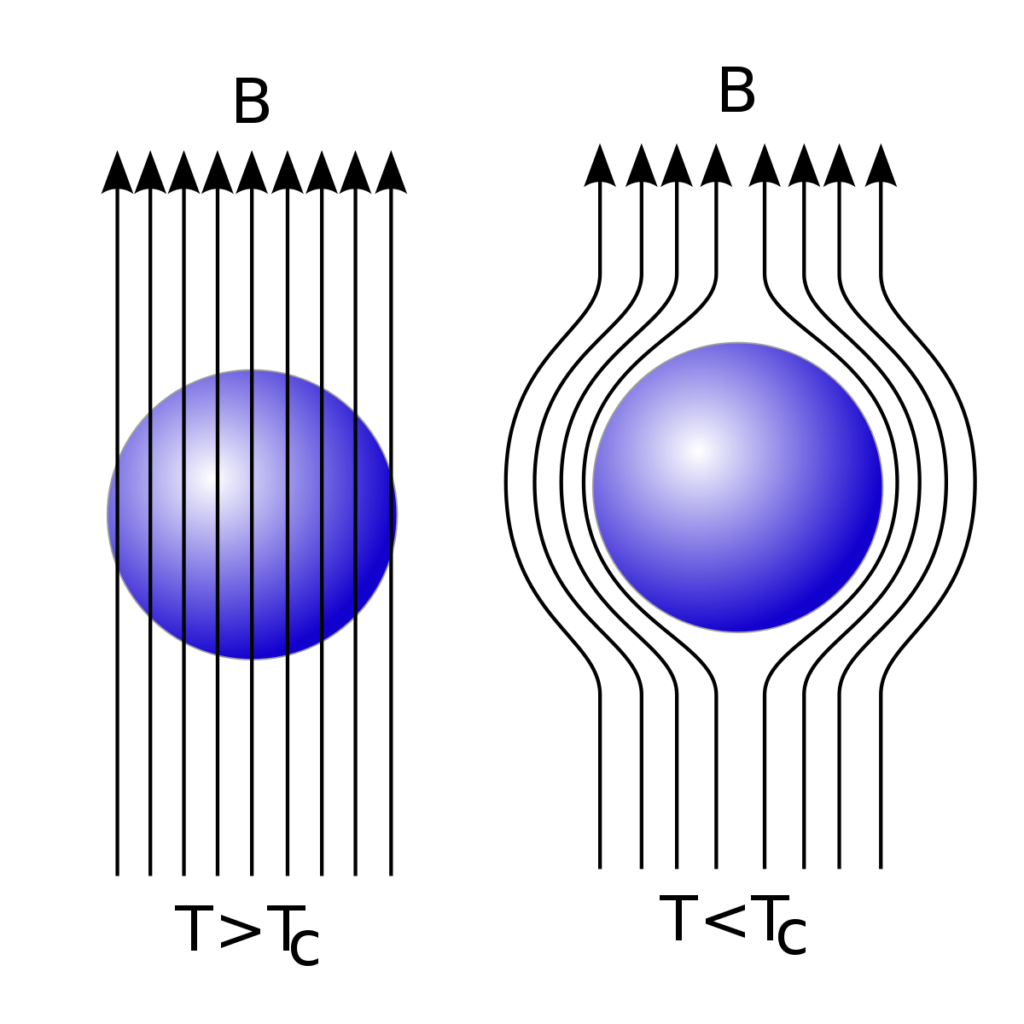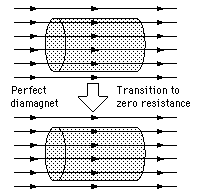- Superconductivity is a phenomenon of exactly zero resistance and expulsion of magnetic flux fields occurring in certain materials, called superconductors when cooled below a characteristic critical temperature (Tc).
- Resistance is undesirable because it produces losses in the energy flowing through the material.
- Superconductivity is a quantum mechanical phenomenon
- In metallic conductors, electrical resistance decreases gradually as the temperature is lowered whereas, in a superconductor, the resistance drops abruptly to zero when the material is cooled below its critical temperature.
Meissner Effect:
- When a material (superconductor) makes the transition from the normal to the superconducting state, it actively excludes magnetic fields from its interior. This phenomenon is known as Meissner effect.
- It does this by setting up electric currents near its surface. The magnetic field of these surface currents cancels the applied magnetic field within the bulk of the superconductor.

Difference between Superconductor and Perfect Diamagnet:
The magnetic behaviour of a superconductor is different from that of a perfect diamagnet.


- Perfect diamagnet: In this, if a conductor already has steady magnetic field through it and was then cooled through the transition to a zero resistance state, becoming a perfect diamagnet, the magnetic field would be expected to stay the same.
- Superconductor: Contrary to a perfect diamagnet, it will actively exclude any magnetic field present when it changes from normal to the superconducting state.
Hence active exclusion of magnetic field must be considered an effect which is distinct from just zero resistance.
Thus, Superconductivity is a state of matter in which the resistance of the material becomes zero and in which no magnetic field is allowed to penetrate the sample.
Properties:
- Superconductivity is a low-temperature phenomenon.
- The transition from normal state to superconducting state occurs below the critical temperature.
- Different materials will have different critical temperatures.
- The current once set up in a superconductor persists for a long time due to zero resistivity.
- Materials having normal resistivity exhibit superconductivity.
- Superconducting materials are not good conductors at room temperature.
